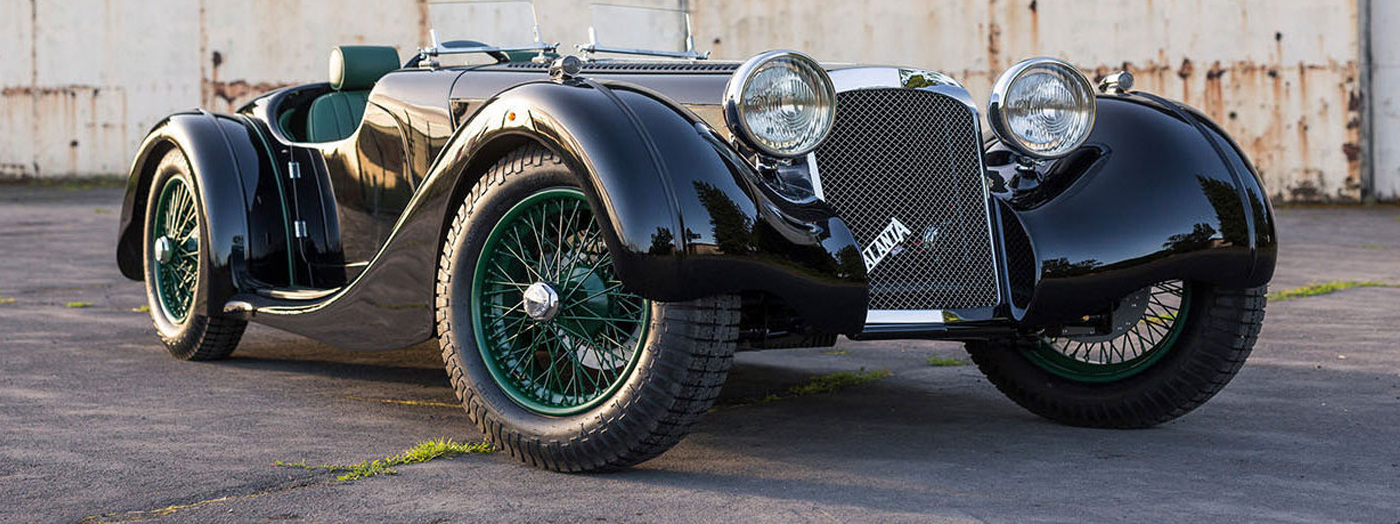Atalanta is the greatest British carmaker you’ve never heard of. Its 1937 roadster had fully independent suspension, a twin-spark engine, hydraulic brakes and an electric pre-selector gearbox – the vintage equivalent of flappy paddles. But just two years and 22 cars later, it was all over for the Staines-based company, as it switched to making pumps and generators for the war effort.
The second coming of Atalanta has been one man’s lifelong labour of love. Martyn Corfield began his obsession with the marque after seeing the sister car to its 1938 Le Mans racer in a local garage as a child. He now owns that latter car – which forms the basis for the new roadster – along with another two of the seven surviving Atalantas. “The car’s been reverse-engineered to meet current legislation,” Martyn explains, “but we’ve stayed true to the spirit of the original.”
Each Atalanta takes 2,500 man-hours to build, and just one a month is planned. “You don’t get into low-volume sports cars to make money,” jokes Martyn. The chassis is ash wood, fitted with hand-beaten aluminium panels, traditional wire wheels and lofty 550-18 tyres made for historic racing. Concessions to modernity are minimal: side repeaters, seat belts, head restraints and a collapsible steering column – but that’s about it.
I meet Martyn outside Atalanta’s workshop at Bicester Heritage – the ex-military base that’s now the de facto home of the UK classic motor industry. The car is basking in the spring sunshine and, by God, it looks fabulous: all sensuous curves and glinting chrome. I pause to drink in the details. Highlights include a second filler cap that conceals a socket for a trickle charger, plus the enamelled emblem of Atalanta – a huntress from Greek mythology – on the steering wheel boss. The paint is lustrous, the leather sumptuous. Overall finish befits a car that costs £150,000.
However, I’m not here to gawp: there’s an empty airfield next door. The Atalanta’s Ford-sourced 2.5-litre four barks rudely into life, its side exhaust woofling busily beneath my right elbow. The footwell is narrow and the pedals very closely spaced, even for my size-eights, but the five-speed gearbox feels well-oiled and the unassisted steering has a weighty directness.
On the tight turns of Bicester’s improvised track, the Atalanta is physical, and invigorating, yet surprisingly benign. Its natural tendency is to run gently wide, but grab it by the tweed lapels and you can provoke some – decidedly ungentlemanly – steer-from-the rear. It’s no dynamic benchmark, but it’s good old-fashioned fun.
In truth, though, the Atalanta is happiest on the road. Its lazy, low-down torque means you rarely need anything but third and fourth gears, so we slow down and savour the scenery – not least the fabulous view along that long, louvred bonnet. Martyn promises “a 1930s experience with the rough edges removed” and, while I’ve never driven a real vintage car, it feels genuinely different to anything else.
And that’s the point. The Atalanta is noisy, a little bumpy and has no creature comforts, but all of that scarcely matters. Most owners will have a collection of cars anyway. As we blat between hedgerows and rumble through idyllic Cotswold villages, it feels like we’ve teleported back to the golden age of motoring: the classic car cliché made real. Rose-tinted specs may be firmly in place, but I’m smitten.
If you want to see the Atalanta roadster up-close, it will be among 80 classic cars at London’s new City Concours. The event takes place at the Honourable Artillery Company headquarters in EC1 on Thursday 8 and Friday 9 June.
